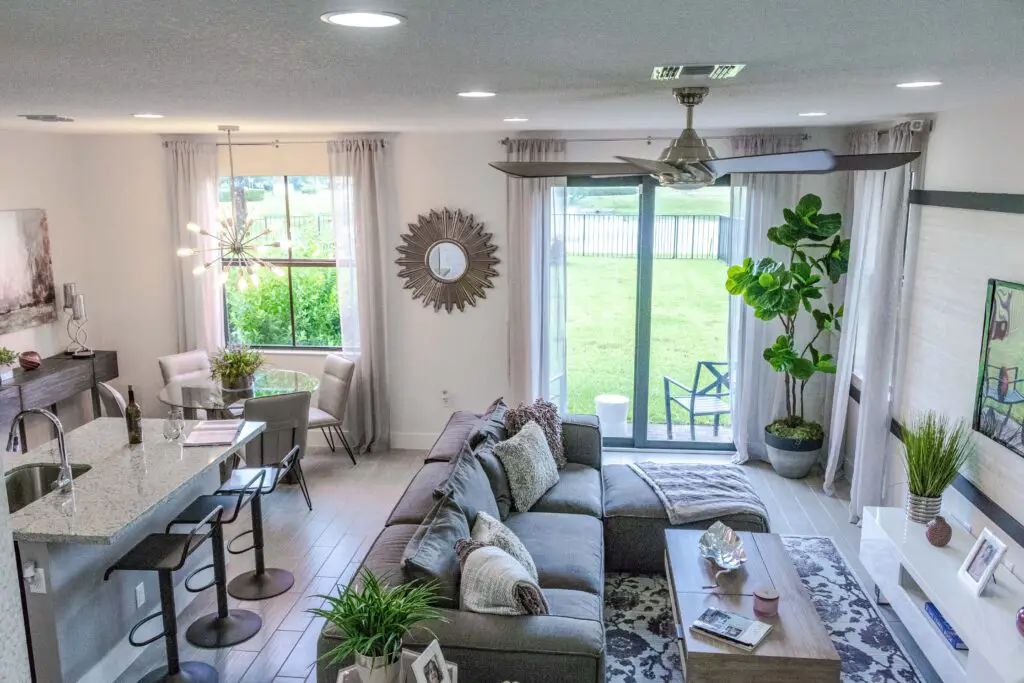Your bedroom should be a sanctuary—a place where you can escape the stresses of daily life and recharge your mind, body, and spirit. One way to cultivate a serene atmosphere in your bedroom is by drawing inspiration from Japanese Zen design principles.
Japanese Zen design emphasizes simplicity, minimalism, and a deep connection to nature. By incorporating these elements into your bedroom decor, you can create a space that promotes relaxation, mindfulness, and restful sleep. From decluttering your space to embracing natural materials and soothing colors, there are countless ways to infuse your bedroom with the peaceful essence of Zen.
In this comprehensive guide, we’ll explore how you can incorporate Japanese Zen elements in your bedroom to transform it into a tranquil retreat where you can unwind, recharge, and find inner peace.
1. Simplify Your Space
The first step in creating a Zen-inspired bedroom is to declutter and simplify your space. Remove unnecessary furniture, accessories, and clutter that can disrupt the flow of energy and create visual chaos. Embrace minimalist bedroom design principles by opting for clean lines, uncluttered surfaces, and a pared-down color palette.
Keep your bedroom free of distractions, such as electronics and work-related items, to promote a sense of calm and relaxation. Store items out of sight in drawers or cabinets to maintain a clean and serene environment conducive to restful sleep.
2. Embrace Natural Materials
Japanese design celebrates the beauty of natural materials, such as wood, bamboo, and stone. Incorporating these elements into your bedroom decor can evoke a sense of harmony and connection to the natural world. Choose furniture made from sustainable wood or bamboo to bring warmth and texture to your space.
Opt for bedding and textiles crafted from natural fibers, such as cotton or linen, for a soft and breathable feel. Add touches of nature to your bedroom with potted plants or fresh flowers to purify the air and infuse your space with vitality.
3. Create a Serene Color Palette
The colors you choose for your bedroom can have a profound impact on its atmosphere and mood. In Japanese Zen design, neutral tones and soft, earthy hues dominate, creating a sense of tranquility and balance. Opt for calming colors such as soft greens, muted blues, and warm earth tones to evoke a sense of serenity and harmony.
Avoid bold or vibrant colors that can be visually stimulating and disrupt your ability to relax. Instead, choose muted shades that promote a sense of calm and help you unwind at the end of a long day.
4. Foster Balance and Harmony
Balance and harmony are fundamental principles of Japanese Zen design. Arrange furniture and decor in your bedroom to create a sense of equilibrium and flow. Place your bed in the center of the room with ample space around it to promote a sense of openness and balance.
Incorporate elements of symmetry and asymmetry to add visual interest and dynamism to your space. Balance soft textures with smooth surfaces, and mix organic shapes with clean lines to create a harmonious and inviting environment.
5. Cultivate Mindfulness and Relaxation
Your bedroom should be a place where you can unwind, relax, and practice mindfulness. Create a dedicated space for meditation or yoga to promote mental clarity and emotional well-being. Incorporate soft lighting, such as dimmer switches or paper lanterns, to create a warm and inviting atmosphere conducive to relaxation.
Invest in a comfortable mattress and supportive pillows to ensure a restful night’s sleep. Keep electronic devices out of the bedroom and establish a bedtime routine that helps you wind down and prepare for sleep. By cultivating mindfulness and relaxation in your bedroom, you can create a peaceful sanctuary where you can escape the stresses of daily life and find inner peace.
Conclusion
Transforming your bedroom into a Zen-inspired sanctuary is a powerful way to promote relaxation, mindfulness, and rejuvenation. By incorporating minimalist design, natural materials, calming colors, and a sense of balance and harmony, you can create a space that nurtures your well-being and supports restful sleep.
Frequently Asked Questions (FAQs)
1. How can I create a minimalist bedroom?
To create a minimalist bedroom, start by decluttering your space and removing unnecessary furniture and accessories. Embrace clean lines, uncluttered surfaces, and a pared-down color palette to create a sense of simplicity and calm. Invest in multi-functional furniture and storage solutions to maximize space and minimize visual clutter.
2. What are some examples of natural materials I can incorporate into my bedroom decor?
There are many natural materials you can incorporate into your bedroom decor to evoke a sense of harmony and connection to nature. Consider using wood, bamboo, stone, cotton, linen, and rattan in your furniture, bedding, and accessories. These materials bring warmth, texture, and authenticity to your space while promoting a sense of tranquility and balance.
3. How do I choose the right colors for a Zen-inspired bedroom?
When choosing colors for a Zen-inspired bedroom, opt for soft, muted tones that promote a sense of calm and relaxation. Neutral colors such as white, beige, gray, and taupe create a serene backdrop, while soft greens, blues, and earth tones evoke a connection to nature. Avoid bright or bold colors that can be visually stimulating and disrupt your ability to unwind and sleep peacefully.
4. What are some ways to create balance and harmony in a bedroom?
To create balance and harmony in your bedroom, arrange furniture and decor to promote a sense of equilibrium and flow. Place your bed in the center of the room with ample space around it to create a feeling of openness and balance. Mix textures, shapes, and materials to add visual interest and create a harmonious environment that feels inviting and serene.
5. How can I promote mindfulness and relaxation in my bedroom?
To promote mindfulness and relaxation in your bedroom, create a dedicated space for meditation or yoga where you can practice mindfulness and self-care. Incorporate soft lighting, comfortable bedding, and soothing scents to create a peaceful atmosphere conducive to relaxation. Establish a bedtime routine that helps you unwind and prepare for sleep, and keep electronic devices out of the bedroom to minimize distractions and promote restful sleep.



